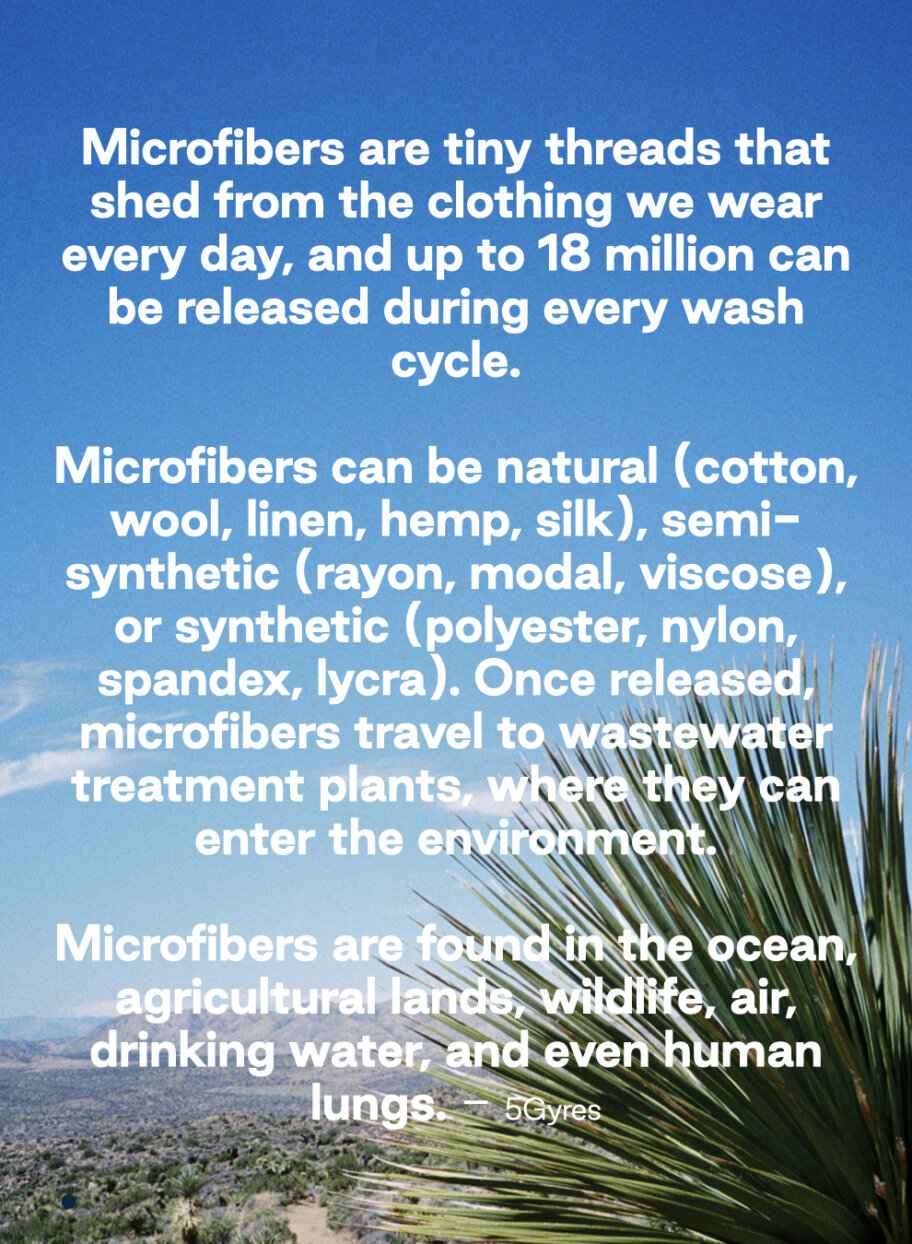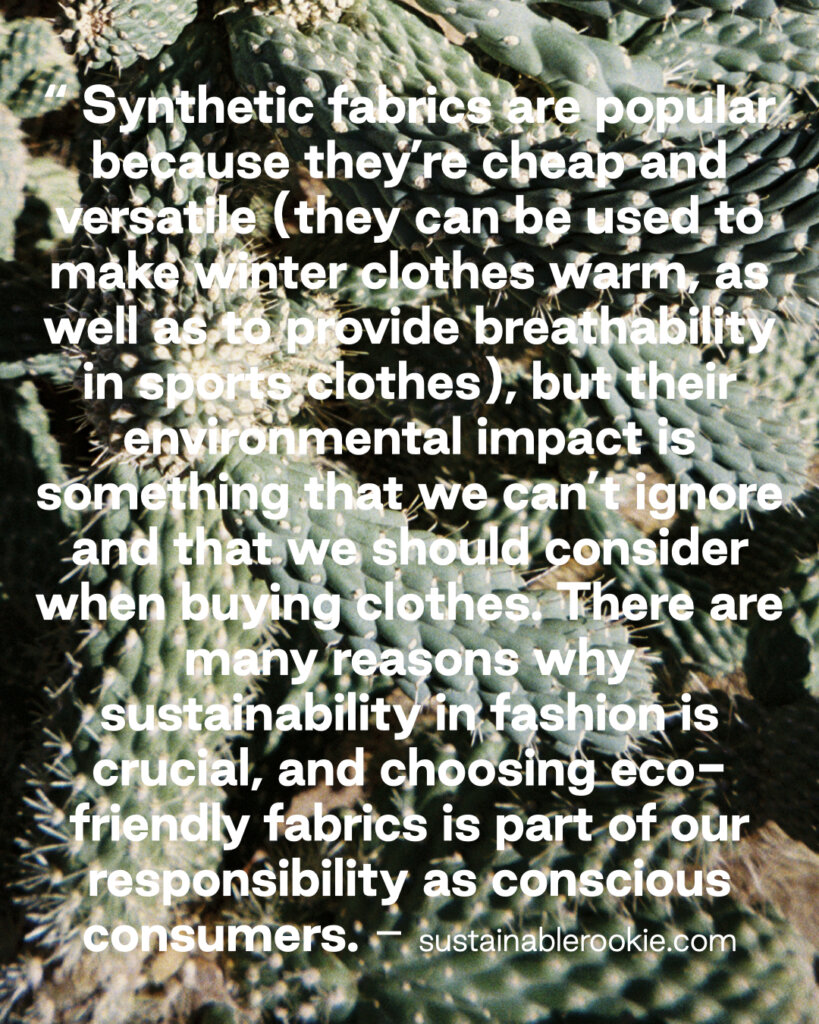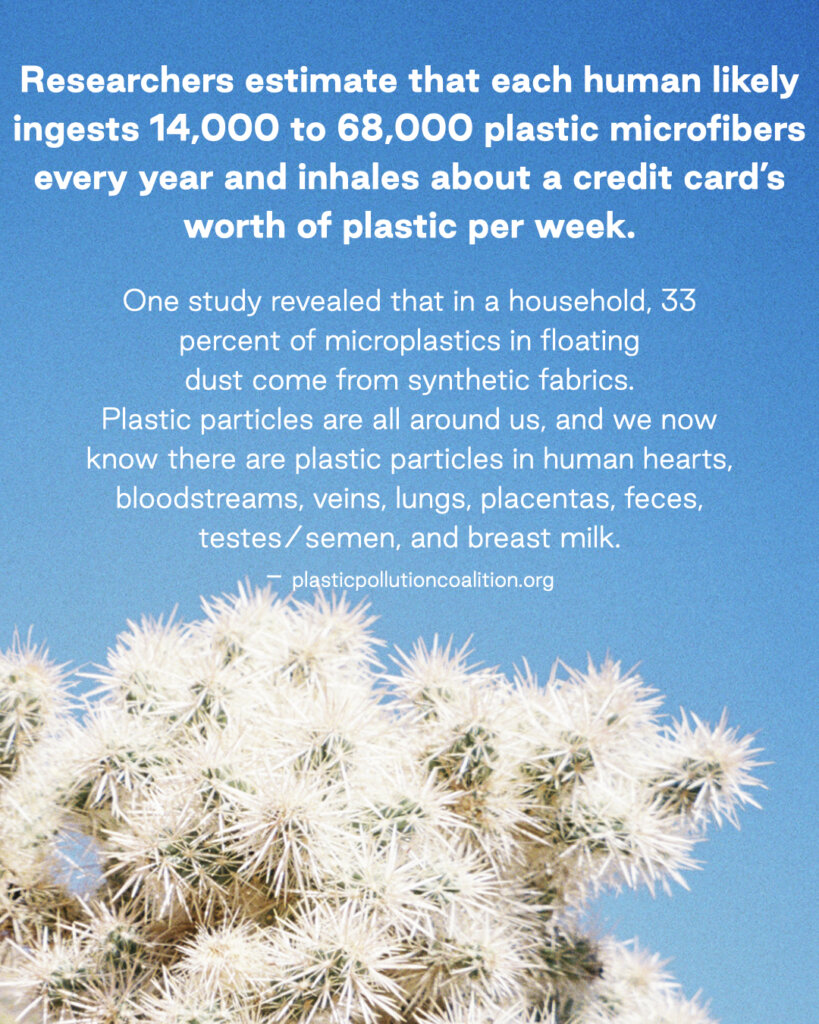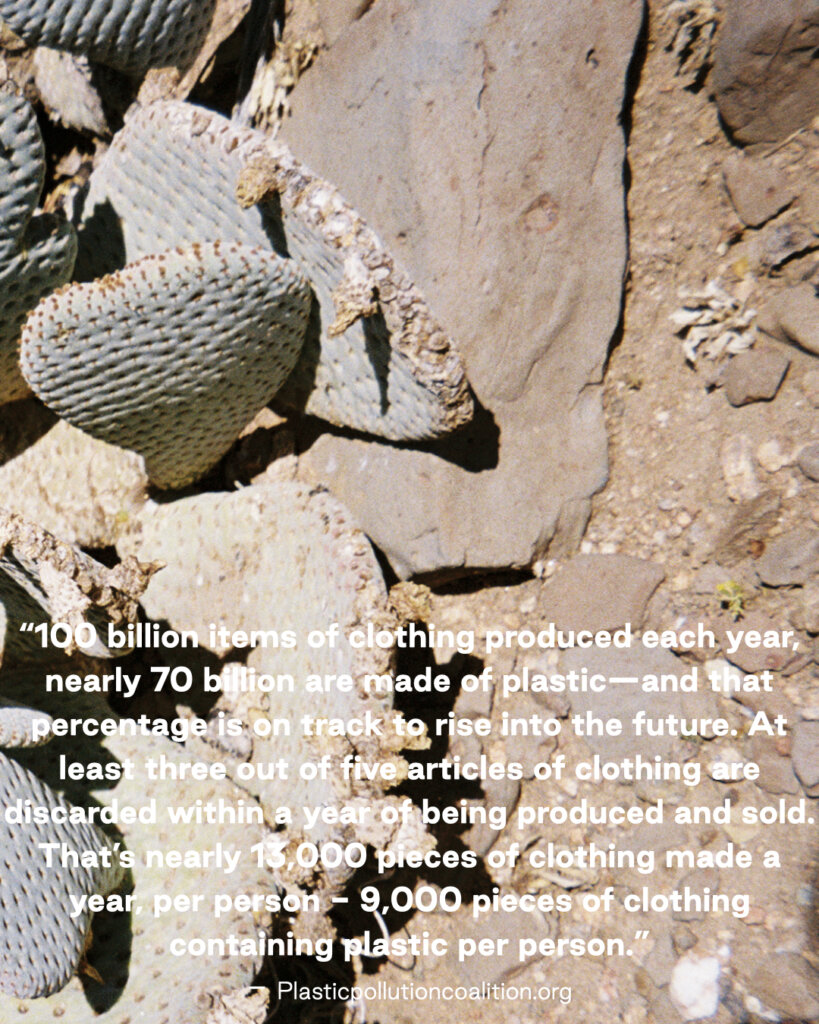
TEXT JESPER GUDBERGSEN @yessirjesper
Studies have shown that more than 60% of the clothes we wear today are made of plastic, and it can be deceiving just where to look for them. Whether it’s obvious in a shiny printed tee, a flash of futuristic latex on your legs or more subtly evident in your favorite and unusually-soft stretchy work out gear, the fact of the matter is that in all these cases, it comes down to plastic being used in one way or another in your clothing.
So, why exactly is plastic in clothing so bad? To wrap our heads around the issue, breaking it down in two parts might help: Plastic’s impact on the outer world vs the impact on our insides.


The most widely recognizable result of overconsumption; thoughtless production and an excessively fast, see-now, buy-now culture is waste pollution. Everything in our lives is made of or comes in plastic and when we’re done with it – whether we are careful to recycle or not – a majority of it ends up around us in oceans, nature and beyond. We tend to rightfully focus on everyday items here, kitchen items, beauty and skincare products, food/beverage containers and so on, but the conversation often fails to mention the impact our clothing waste contributes to the issue. More than 15 years ago, ecologist Mark Anthony Browne first concluded that 85% of the human-made materials discovered on shorelines were microfibers, matching the types of materials used in clothing.
Not only does garment waste come from actual pieces of clothing themselves, but a lesser known contributor is the way our synthetic clothes break down in the wash, expelling microfibers with every wash into the waterstream. When we wash our clothes, abrasion and shedding causes small synthetic fibers to come off, and the filter inside the machines can’t catch them. Laundry is now responsible for 35% of global releases of primary microplastics to the world oceans, and according to the UN Environment Programme, more than 1.4 million trillion pieces of microfiber plastic is currently in our oceans, due in large part to our obsession with cheap fast fashion. Microfibers are just plastic of another name. Needless to say, this has a devastating effect on the ocean’s animals, leading to a plethora of maladies in marine wildlife – which eventually ends up passing microplastics into our human bodies when we eat them.

Which leads us to the other side of this issue – the effect plastic in fashion has on the inside of us humans. Plastic in our bodies is getting increasing attention, with studies showing microplastics in humans causing a host of imbalances and health concerns still largely unknown, including endocrine disruption, hormone imbalances, damage to the reproductive system and many more.
Not only are we absorbing these microplastics through our food and water (bottled water or tap water alike), but studies increasingly show how damaging the air around us is as well. For instance, a study in Scotland in 2018 showed that after leaving mussels out for a period of time, the amount of microplastics amassed from simply being exposed to air was far greater than what the mussels had been absorbing in the ocean.
Absorbing microplastic through the air we breathe happens continuously, whether we are hanging out at the laundromat or not. By simply doing what we must – breathe air to survive – we are causing damage to our bodies, with chronic exposure shown to cause great irritation of the lungs, autoimmune diseases, even lung cancer.
Not only absorbed by the air, we are also soaking in the damaging effects of microplastic into our bodies through wearing clothes, via abrasion. Every time you wear plastic-derived polyamide textiles, tiny plastic fibers are rubbed off and absorbed into our skin. Other studies on human tissue have shown that exposure to nylon fibers decreased the number and size of airways by 50%, but even more alarmingly, the chemicals released from them could be a huge part of the problem as well.
The research on both is in its infancy, but is truly alarming even at these early stages.
The more we dive into the issue at hand, it can seem daunting to fully grasp how a banal act – simply wearing clothes every day – can have such a devastating effect on ourselves and our surroundings. The closer we look and the greater the impact reveals itself, it’s only natural that the anxiety increases. How do we tackle this without feeling overpowered and helpless? We suggest: let’s begin with knowledge, followed by small change on a personal level.
It’s incredibly important to raise awareness about these hidden dangers in the every-day, and we won’t stop educating ourselves and sharing with our community what we find. While we wait for greater powers to introduce real change on a legal and international scale, small changes in our habits are an important first step and have an exponential impact on the world around us.
Plastic is with us forever. Let’s stop draping ourselves in it every day.
| Cookie | Duration | Description |
|---|---|---|
| cookielawinfo-checkbox-analytics | 11 months | This cookie is set by GDPR Cookie Consent plugin. The cookie is used to store the user consent for the cookies in the category "Analytics". |
| cookielawinfo-checkbox-functional | 11 months | The cookie is set by GDPR cookie consent to record the user consent for the cookies in the category "Functional". |
| cookielawinfo-checkbox-necessary | 11 months | This cookie is set by GDPR Cookie Consent plugin. The cookies is used to store the user consent for the cookies in the category "Necessary". |
| cookielawinfo-checkbox-others | 11 months | This cookie is set by GDPR Cookie Consent plugin. The cookie is used to store the user consent for the cookies in the category "Other. |
| cookielawinfo-checkbox-performance | 11 months | This cookie is set by GDPR Cookie Consent plugin. The cookie is used to store the user consent for the cookies in the category "Performance". |
| viewed_cookie_policy | 11 months | The cookie is set by the GDPR Cookie Consent plugin and is used to store whether or not user has consented to the use of cookies. It does not store any personal data. |